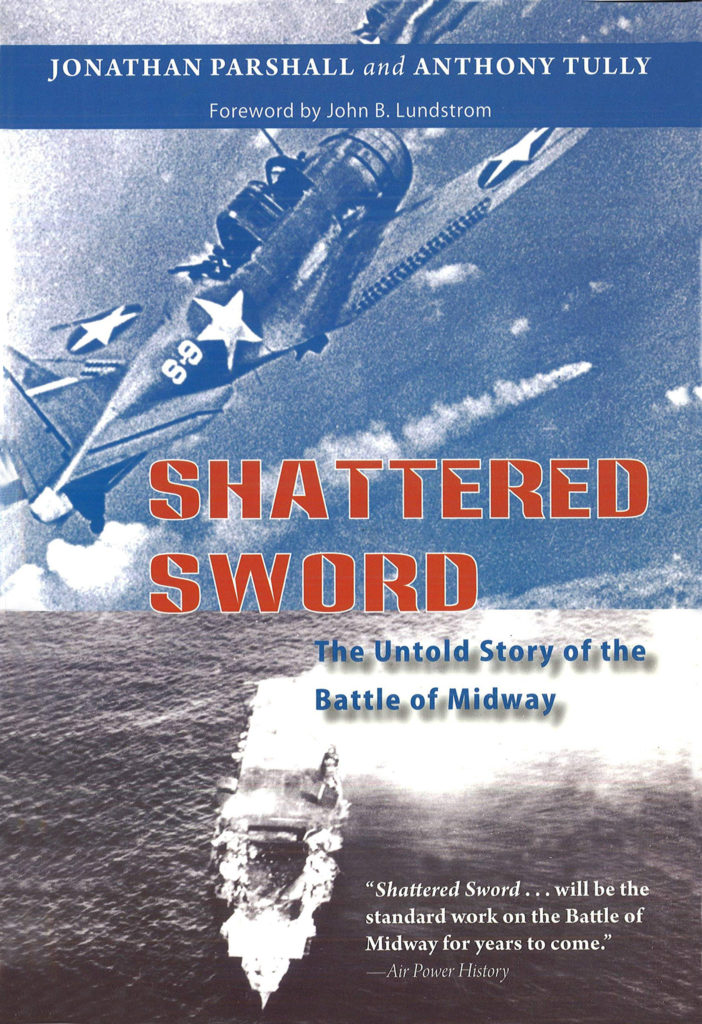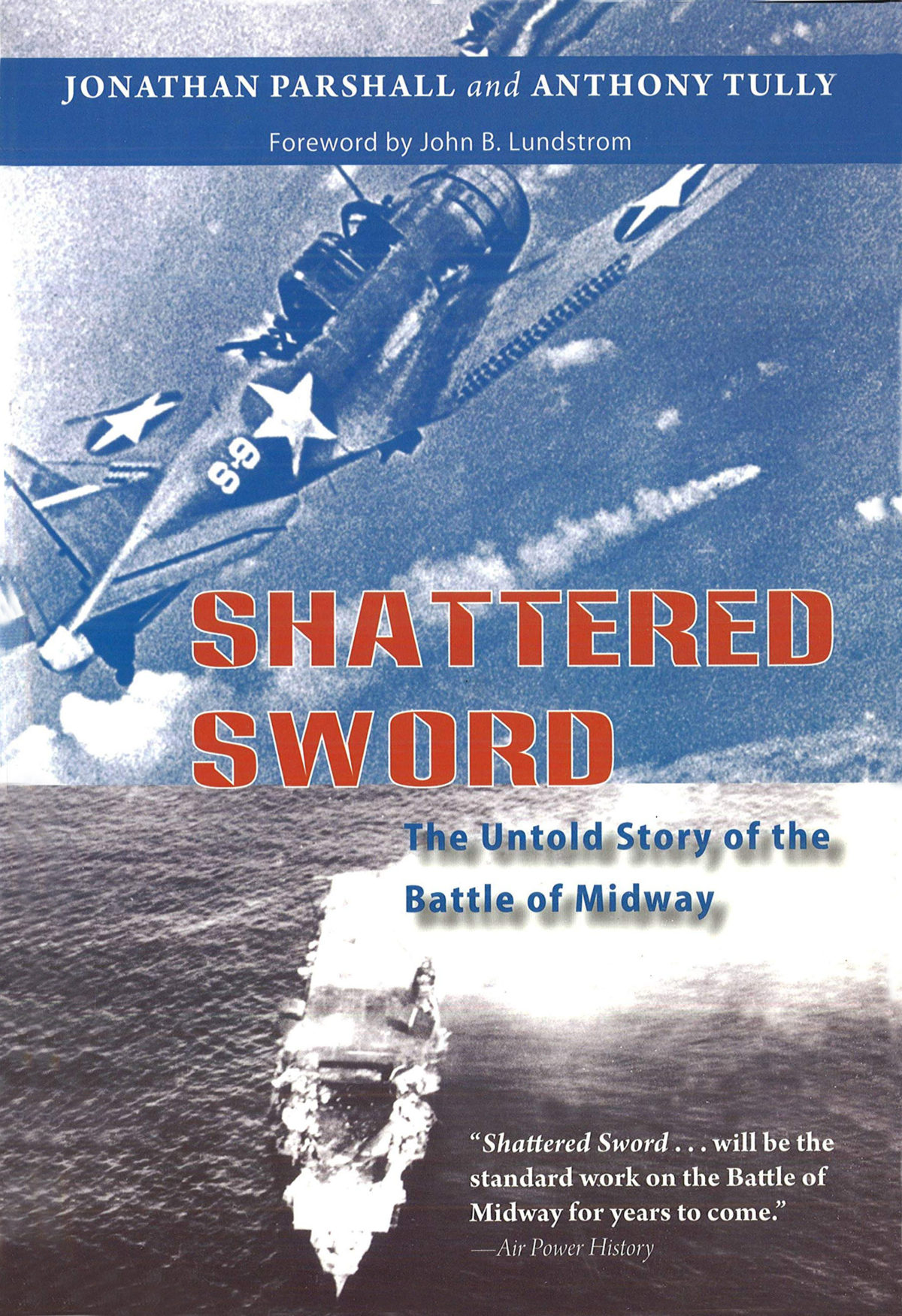Shattered Sword: The Untold Story of the Battle of Midway by Jonathan Parshall and Anthony Tully; Potomac Books, Herndon, Va., 2005, $35.
The moment is etched in gilt in American history as the “miracle at Midway.” Just as it appears all is lost, American dive bombers fortuitously arrive over the Japanese carrier task force moments before Emperor Hirohito’s “Sea Eagles” begin launching a devastating strike certain to secure Japan’s victory. In five fateful minutes, the Douglas SBDs ignite three of the four Japanese carriers and change the course of the Pacific War.
In this stunning new book, Jonathan Parshall and Anthony Tully explain why this scene—and vast other parts of the standard American understanding of the Japanese navy at the Battle of Midway—is wrong.

Shattered Sword
THE UNTOLD STORY OF THE BATTLE OF MIDWAY
by Jonathan Parshall and Anthony Tully; Potomac Books, 2005
This post contains affiliate links. If you buy something through our site, we might earn a commission.
Two generations of American historians (with notable exceptions, such as John Lundstrom) erected their accounts of the imperial navy at Midway from a trio of sources: Vice Admiral Chuichi Nagumo’s report, interrogations of Japanese officials by the U.S. Strategic Bombing Survey and Fuchida Mitsuo’s book, Midway: The Battle That Doomed Japan. The authors illustrate the limits of the first two, but as to the third, they tactfully call it “irretrievably flawed.” To put it bluntly, it is a pernicious pact of prevarications.
Shattered Sword emerges as the indispensable source on Japan at Midway. From a meticulous sifting of a mass of Japanese documents, the authors generate a narrative that both describes and explains Japan’s role. Some may find the details of Japanese carrier doctrine heavy going, but the authors correctly emphasize that the decisions made by Nagumo cannot be understood or evaluated fairly without appreciation of the serious practical inhibitions that doctrine inflicted on Japanese carrier operations. Parshall and Tully prove that the choices Nagumo faced were not those found in the standard accounts, for reasons that are vital to understand.
Along the way, the authors either demolish or radically modify a laundry list of Midway mythology: the United States triumphed against overwhelming odds; the Aleutians operation was designed as a feint for Midway; a different Japanese search plane plan or the delayed takeoff of one float plane constituted critical errors; and that Japan’s elite cadre of carrier aviators sustained catastrophic losses. What is particularly admirable about this work is that it both rewrites the tactical and operational aspects of Midway and ties these to the largest questions of Japanese naval doctrine. That doctrine fused the most modern Western naval thought with the penchant for dispersal and mystification of ancient oriental strategists.
No fewer than 11 appendices tabulate technical and organizational aspects of Japanese operations during the Midway campaign. This includes carrier and aircraft markings, a detailed breakdown of flight operations and casualties aboard the Japanese carriers, and an interesting essay indicating that the planned amphibious assault on Midway faced very grim prospects, even if the imperial navy had won the battle.
Many books are hyped as “breakthrough” or “vital”; Shattered Sword is the genuine article. It will entertain the novice and amaze the deepest student of the Pacific War.
Originally published in the October 2006 issue of World War II. To subscribe, click here.





